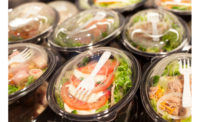Transparency remains one of the biggest influencers driving consumer purchase behavior today. And, sustainability, which sits within the broader topic of transparency, is becoming increasingly important to many consumers. Case in point: a study produced by Nielsen, Chicago, reveals a 20% increase in sustainable product sales since 2014.
It’s also worth noting that sustainability spans well beyond what consumers eat. For example, packaging is just as much of a consideration as the food they contain.
And, U.S. retailers of all types are seeing upticks in everything from pre-made food offerings to meal kits.
However, diet is a common element for most health-focused consumers, and their purchasing behaviors are clear indicators that they’re following through on their desires to eat better. In fact, many consumers have adopted regular snacking regiments given that they can be quick, easily prepared and take less time to eat than a full meal. In some cases, consumers are replacing full meals with snacks.
Likewise, the future of fresh spans beyond sustainability and healthy swaps. In addition to seeing greater Hispanic influence across American flavor profiles, trends also show the influence of Asian products as well, with a 5% growth in sales of Asian products across the store. Middle Eastern influences are gaining momentum as well, particularly with respect to fruits and herbs:
- Sales of guava (used for Mexican, Latin/South American, Asian and Middle Eastern dishes) increased at a compound annual growth rate of 15% over the past five years.
- Sales of pitaya, commonly known as dragon fruit (used in Mexican, Latin/South American and Asian dishes), have increased at a compound annual growth rate of 33% over the past five years.
- Sales of fresh ginger (used in Asian and Middle Eastern dishes) have grown at a 5-year compound growth rate of 9%.
- Sales of fresh epasote, an herb native to Mexico, Central and South America, have grown at a 5-year compound annual growth rate of 10%.
- Sales of fresh tumeric have grown at a 5-year compound annual growth rate of 76%.


